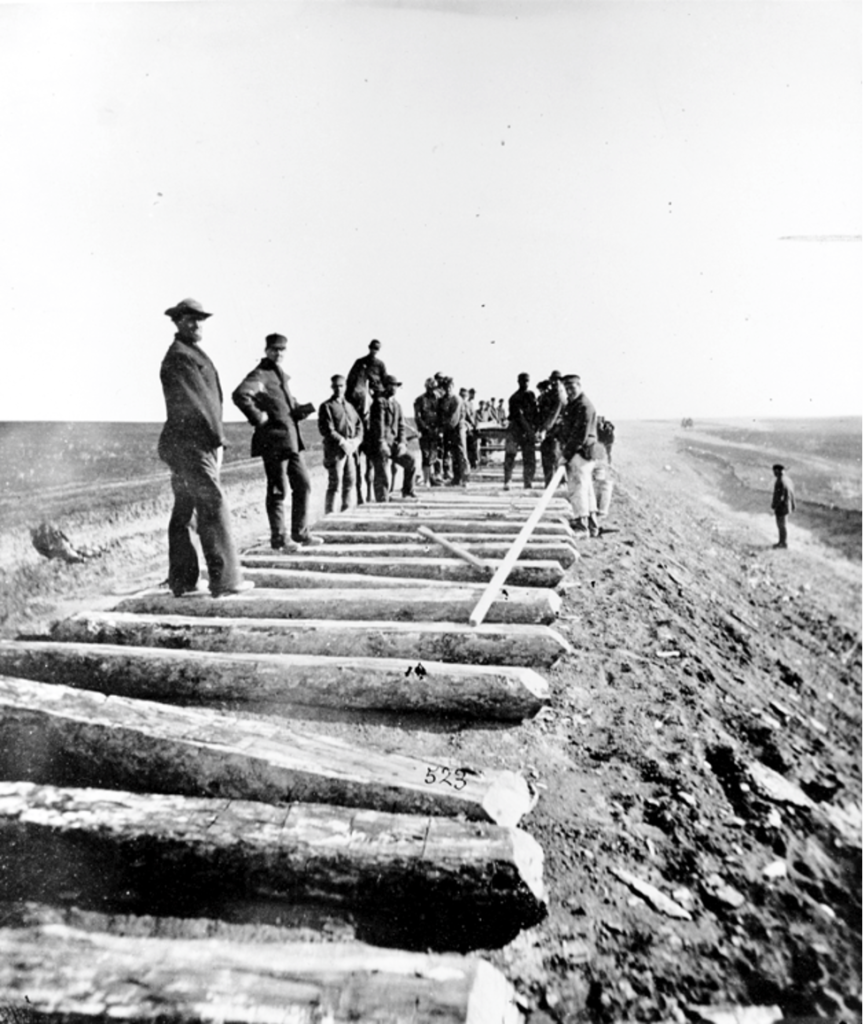Clay County Histories
Markus Krueger | Program Director HCSCC

Northern Pacific Railway workers in 1871
School’s out for summer, which brings to an end a very busy time at our museum. Starting at the end of April and going right up to the last day of school, kids from around the region descend upon the Hjemkomst Center for field trips. It is a joyous time for us. I love seeing each and every kid gasp and say “whoooaaaa” when they first glimpse the Viking Ship in our museum. But after more than a month of school tours are as big as 120 kids at a time, I join my teacher friends and every American kid in a cheerful toast to summer vacation.
I haven’t tallied it all up yet (and there’s still a couple classes to come) but I’d say there are now about 2000 more kids from Moorhead, Detroit Lakes, Enderlin, Fergus Falls, Park River, and points in between who learned how to say “Hjemkomst” (YUM-komst!) in tours of the ship and learned how to say Buffalo River in both Ojibwe (Bizhiki-ziibi) and Dakota (Tataŋka Wakpa) in tours of our exhibit about the founding of Clay County 150 years ago. They learned about how a man named Guy Paulson built a replica of a medieval Norwegian stave church as an epic retirement project in the “oldendays” of the 1990s. Clay County Archivist Mark Peihl showed them treasures in the archives. And as the guy who organizes all those school tours, I hope you can forgive me for not having too much brainpower remaining to say much of interest in this column.
But I have been thinking of this photograph. This is one of the oldest photographs of Clay County. It shows the workers of the Northern Pacific Railway building track west in the summer of 1871. We have this photo blown up six feet tall in our exhibit about the founding of Clay County. It was these railroad tracks that created a row of towns – Brainerd, Detroit Lakes, Hawley, Glyndon, Moorhead, Fargo, Valley City, Bismarck, Billings, Spokane, etc. – and brought real US settlement to our region. I showed this photograph to countless kids this month.
Judging by the lack of hills, we can tell the workers are west of Hawley, in the Red River Valley itself. And what I’ve been thinking of recently is just how barren of trees the prairie was. We have a reputation on the northern plains for not having many trees, but there’s not a single tree anywhere in this photograph!
The exhibit also displays original surveyors’ maps and notes from this area, and they too show that the prairie was an ocean of grass that only had trees lining the rivers. Go to Moorhead Center Mall and you can see a massive photograph of early Moorhead with almost no trees to be seen.
But us humans, like all primates, like trees, so we’ve been planting them for the last 150 years around our farmhouses, shelterbelts, and lining our city streets. From a bird’s perspective above, our towns look like forests today. And if that bird were to land in the shade of one of those trees this weekend, they might just find me sitting in a lawn chair with a fizzy drink, soaking up the summer.

